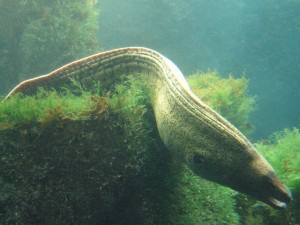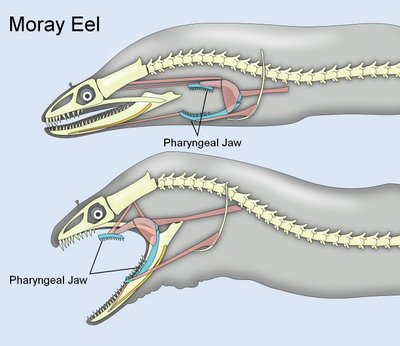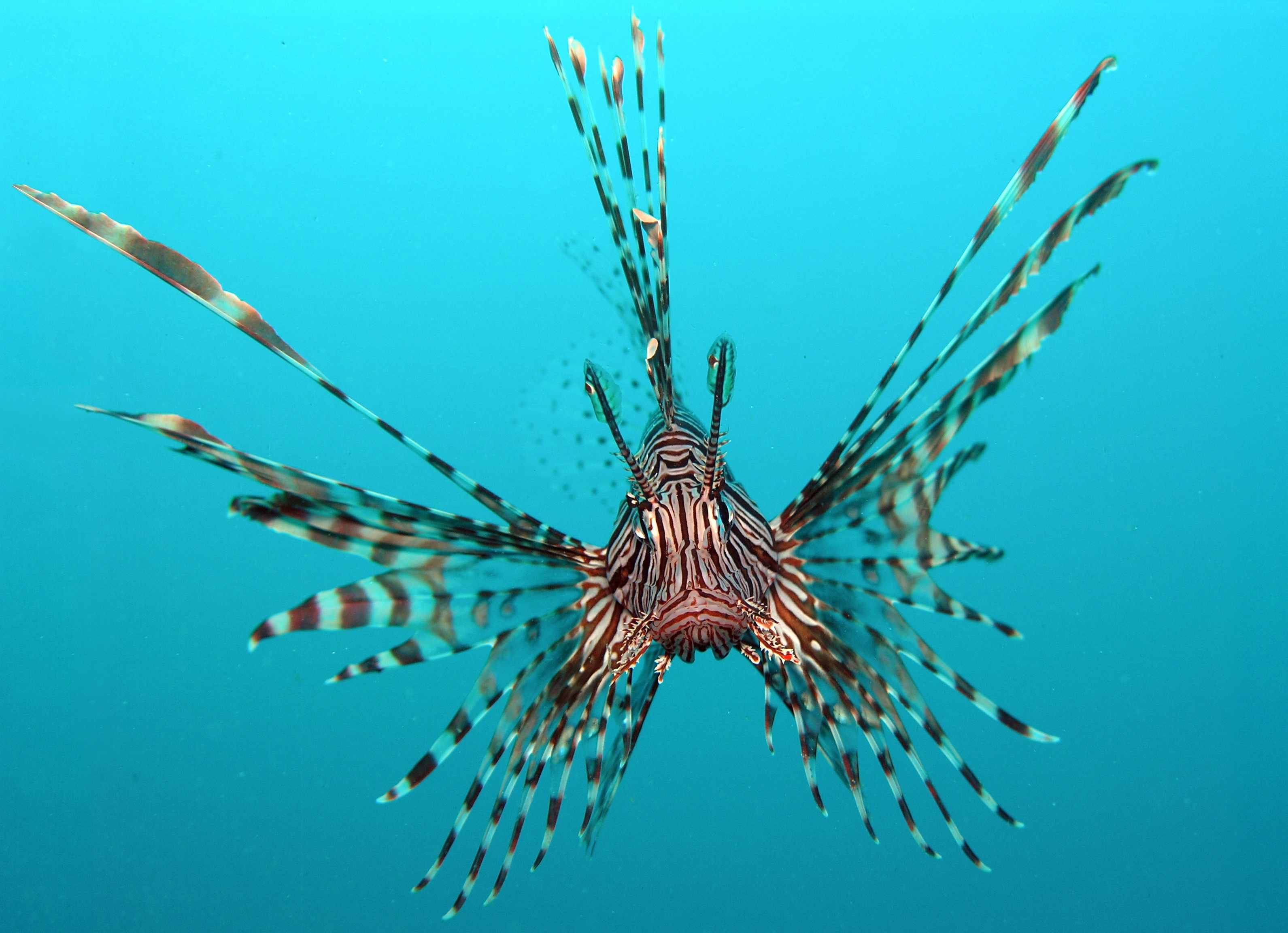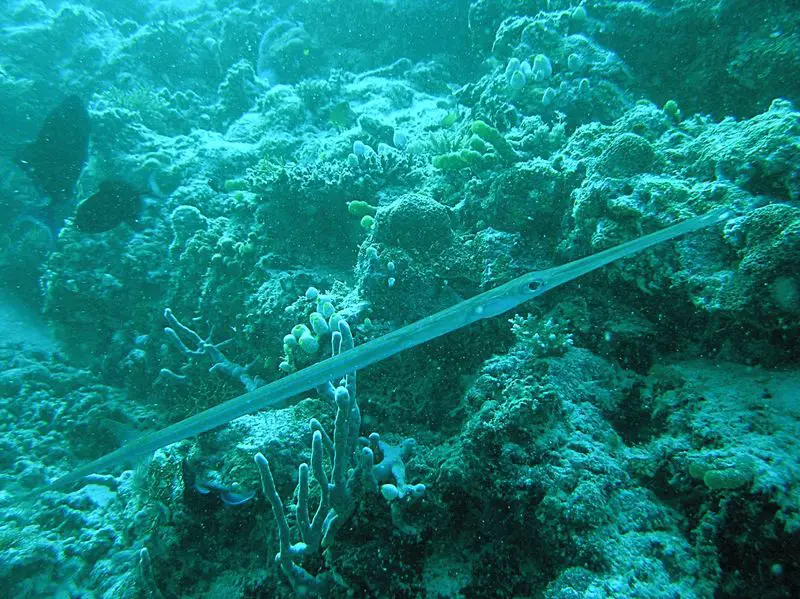Mediterranean Moray
The Mediterranean Moray is an eel of the large Moray family. It is also called the Roman Eel because it was a fine delicacy for the ancient Romans. These large eels, reaching up to 1.5 metres (5 feet) in length and up to 15 kilograms in weight, are on the higher part of the food chain, able to hunt and eat very large sea creatures.
Mediterranean Morays are widely represented in tropical and subtropical waters, ranging from the Eastern part of the Atlantic Ocean from Senegal up to the British Isles, as well as, of course, the Mediterranean Sea. These large fish (eels are classified as fish, not snakes) prefer rocky parts of the sea as well as coral reefs, and can be found lurking in holes and crevices. Not much is know about their mating habits, just that they spawn a large amount of eggs into open water.
These eels lead solitary lives, guarding their home territory from other specimen. Being nocturnal, they’re active at night, hunting for fish, cephalopods and sometimes other, smaller Morays. Their eyesight is not very good, and they rely mostly on their sense of smell to track prey.
What puts the Mediterranean Morays on top of the food chain and makes them the vigorous predators they are, is their unusually developed jaw system. If you have ever seen any of the Alien movies, you’ll remember the creatures from outer space having a second jaw that moves out when the first one is opened – and this is kind of what the Mediterranean Morays have. These eels first bite onto prey with their first jaws and then their so-called pharyngeal jaws shoot out and snap down on the prey.
These jaw adaptations turn the eel into a biting-machine, while most fish rely on opening their large jaws quickly, making the negative pressure of the water suck the prey in their mouths. This unique ability makes the Mediterranean Moray able to swallow fishes and sea creatures of great size, whole.
In Ancient Rome, the Mediterranean Moray was considered a delicacy, served in festive occasions. Romans were also the first to start breeding fish in pools, starting with 150 BC when the emperor ordered pools to be built and filled with Mediterranean Morays. A rather unique way of torture was invented by the Romans, too – they would throw the victim in a Moray Pool, where the eels would slowly bite chunk after chunk off the poor fellow, and this was so painful that gathering information from enemy captives became much easier.
The Mediterranean Moray attacks trespassers of their territory, thus making them a threat to swimmers and divers, too. These massive eels are feared by many fishermen and as the eels are still a delicacy, hunting them takes great care. The Moray’s skin is mildly toxic and can infect a wound, but the biggest threat is the pain inflicted by it’s “second jaw”.




